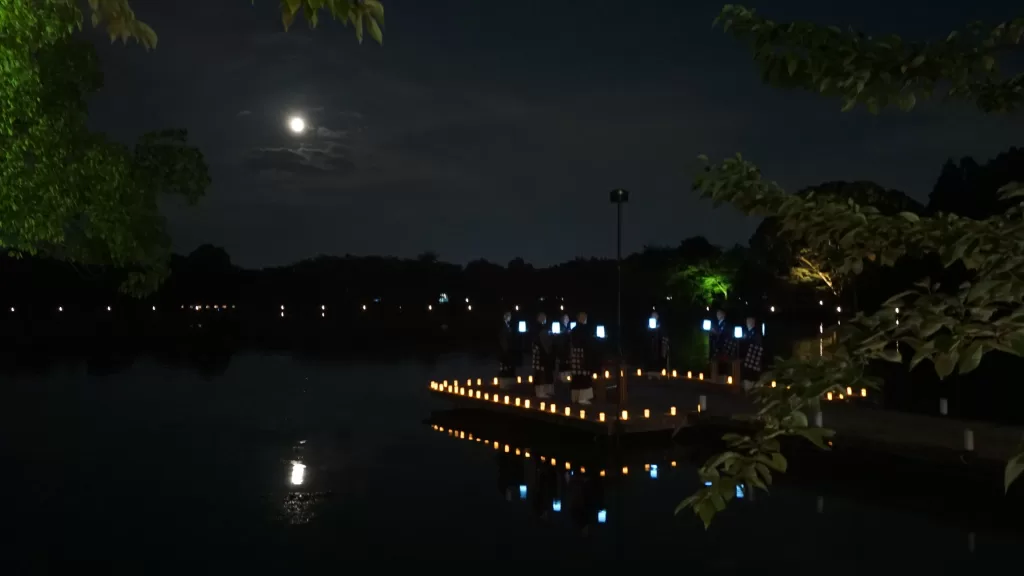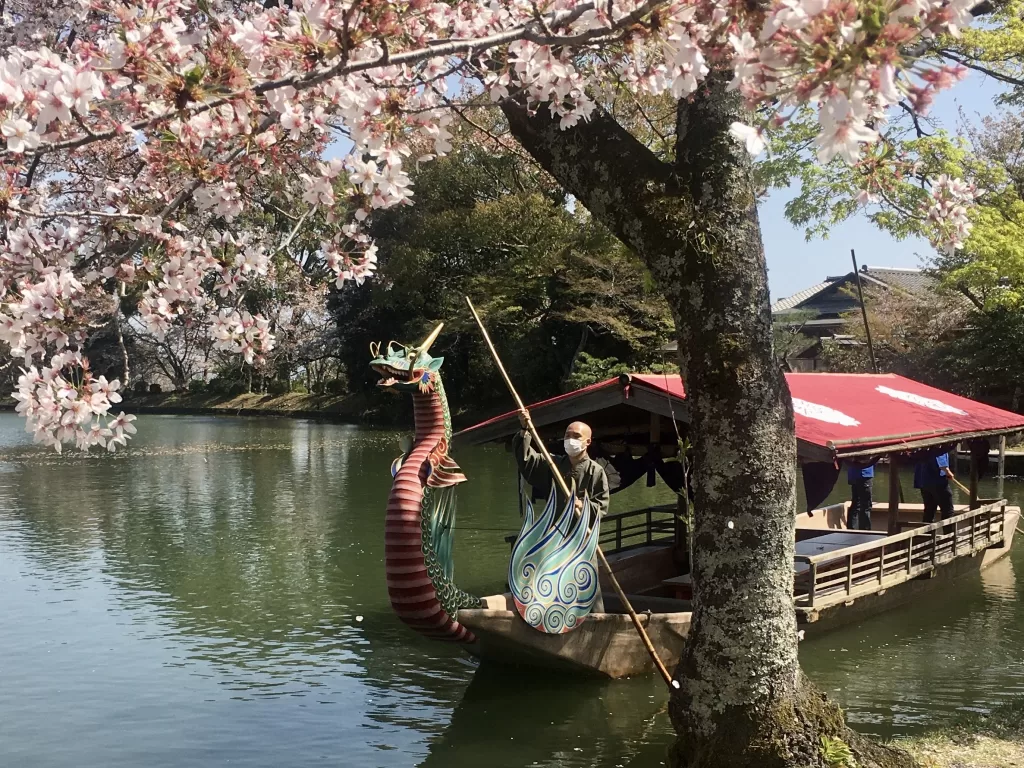Kangetsu no Yūbe: A Traditional Moon-Viewing Experience at Daikakuji Temple

Heian Period Tradition Continues to Thrive
The tradition of Kangetsu no Yūbe, a moon-viewing party, hails from Japan’s Heian period (794 – 1185) where it reached the peak of its popularity amongst nobles. These aristocrats would gather on lake boats or specially constructed moon viewing platforms and gardens to enjoy a leisurely evening sipping alcohol, composing poems, and appreciating the beauty of the full moon.
Today, this practice still thrives in Japan as a cherished cultural event, especially in Kyoto. One of the most popular locations for this experience is Daikakuji Temple in Sagano. Also. it’s one of the most exciting September events in Kyoto.
Daikakuji Temple: A Perfect Blend of History, Nature and Culture
Established in 876, Daikakuji Temple holds historic connections to the Japanese Imperial Family. The temple is set amidst the scenic beauty of Osawa-no-ike Pond, Japan’s oldest surviving man-made garden. With its 1-kilometer circumference and covering an area of 64,000 square meters, Osawa-no-ike Pond captures the stunning reflection of the moon on its surface during autumn nights.
General Affairs Manager Okamura Koshin of Daikakuji Temple explains how emperors and high-ranking nobles practiced a unique form of moon-viewing etiquette by admiring the moon’s reflection on water surfaces or sake cups.

Event Highlights: Boats, Music and Food
Daikakuji Temple’s Kangetsu no Yūbe (moon-viewing party) allows visitors to experience this traditional practice by riding ornately styled Ryū-tō Gekishu boats out onto Osawa-no-ike Pond. Each boat is decorated with one of two imaginary creatures at the bow – a dragon (ryū) or a type of waterfowl (geki).
Held over several nights in September or October, visitors have the opportunity to purchase boat tickets for 1,000 yen and choose between four boarding time slots: 5PM, 6PM, 7PM, and 8PM. While enjoying the moon’s reflection on the calm waters along with relaxing music and food stalls near the lakeside pagoda, visitors can immerse themselves in nature and forget everything else.
Sacred Buddhist Rituals and Sutra Concert
As the sun sets and the moon rises, Buddhist priests at Daikakuji Temple perform rites and offerings to the moon. This ritual known as Mangetsu hoe (full moon ceremony), entails prayers for good harvests, happiness, and spiritual well-being. Visitors can witness young monks singing classic sutras, creating a solemn atmosphere that connects their experience to the Heian-period aristocrats.
Autumn Foliage and Illumination Events
Osawa-no-ike Pond at Daikakuji Temple is also renowned for its vivid autumn foliage, which reaches its peak from mid-November to early December. The area transforms into a magical scene thanks to nighttime illumination that further enhances this cultural experience.
Embark on a journey through time with Kyoto’s Daikakuji Temple’s Kangetsu no Yūbe event, appreciating tradition, beauty, and nature while walking in the steps of Japan’s ancient nobility.
If you are in Kyoto, you can also check out the Chōyō no Sekku. Chōyō no Sekku is just one of the many festivals and events in Kyoto during September.